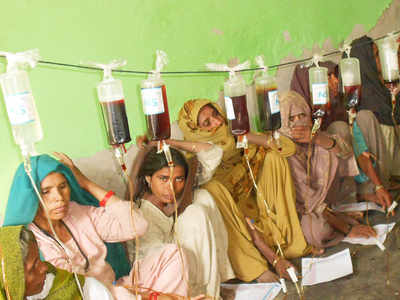June 6, 2023
Addressing India’s Anaemia burden: The urgent need for accurate estimates

Introduction:
- Anaemia, characterized by low red blood cell or haemoglobin levels, poses a significant public health challenge in India.
- The prevalence of anaemia has increased according to the latest data from the National Family Health Survey (NFHS-5), underscoring the urgency of precise estimates to effectively tackle this issue.
- However, concerns about accuracy have led to the exclusion of anaemia questions from NFHS-6.
- This article highlights the importance of accurate estimates to address India’s growing anaemia burden and discusses the shift to the Diet and Biomarkers Survey in India (DABS-I) for improved assessment.
National Family Health Survey (NFHS):
- The NFHS is a comprehensive survey conducted in a representative sample of households throughout India. It aims to provide essential data on health and family welfare for policy and program purposes.
- The survey, conducted by the International Institute for Population Sciences (IIPS) in collaboration with Field Organizations (FO), provides valuable information on various health indicators.
Anaemia: A Growing Menace:
- Anaemia, primarily caused by iron deficiency, leads to symptoms like fatigue and weakness. Deficiencies in other nutrients also contribute to this condition. Addressing nutritional deficiencies is crucial for prevention and treatment.
Shift to DABS-I for Anaemia Assessment:
- To obtain more accurate prevalence estimates, the Health Ministry shifted anaemia assessment to DABS-I. This comprehensive dietary survey collects individual data to assess food and nutrient adequacy nationwide. The reasons for this methodology change include concerns of over-diagnosis, the inadequacy of WHO cut-offs for the Indian population, and differences in blood sampling methods.
Role of DABS-I Dietary Survey:
- DABS-I collects detailed dietary intake data, aiding the understanding of nutritional patterns and deficiencies contributing to anaemia. It provides information on nutrient composition in foods from different regions, facilitating targeted interventions.
Prevalence of Anaemia in India:
- Anaemia is a significant public health concern in India, affecting women, particularly those in the reproductive age group, as well as children. Iron deficiency, socioeconomic factors, and infections/diseases contribute to the high prevalence.
Impact on Health and Well-being:
- Anaemia causes physical symptoms and poses risks to maternal and child health. It can lead to complications during pregnancy, low birth weight, impaired growth and development in children, and cognitive impairments.
Government Initiatives and Interventions:
- The Government of India has implemented various programs, including national nutrition programs, supplementation, and fortification initiatives, to address anaemia and improve maternal and child health. Awareness and education campaigns play a crucial role in promoting nutrition and addressing anaemia.
Challenges and Future Directions:
- Improving access to healthcare, nutritious food, and clean drinking water is essential in tackling anaemia. Multisectoral collaboration across healthcare, nutrition, education, and social welfare is necessary to develop comprehensive strategies.
- Regular monitoring and evaluation of anaemia prevalence and intervention effectiveness are vital to track progress and identify areas that require further attention.
The Conclusion:
- Accurate estimates of anaemia prevalence are crucial in addressing India’s anaemia burden. The shift to DABS-I for assessment reflects the commitment to obtain precise data to develop effective interventions. By implementing government initiatives, raising awareness, and improving access to healthcare and nutritious food, India can make significant strides in combating anaemia and improving the health and well-being of its population.
Mains Exam Practice Question:
Analyze the role of multisectoral collaboration in addressing the anaemia burden and suggest strategies to improve monitoring and evaluation of interventions for effective anaemia control in the country.
January 30, 2025
January 20, 2025
January 14, 2025
